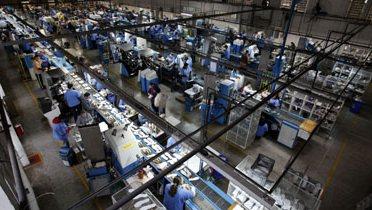INTRODUCTION
Starting in the 1980s, China’s economic growth has been characterized by a rapid acceleration. Even though the Asian financial crisis caused China’s growth to decelerate somewhat, the very high growth rates that picked up again in 2000 have more than doubled per-capita income and total GDP in just a decade.
Since the 1990s, but especially during the 2000s, China’s volume and diversity of imports from across the world began to rapidly increase. Table 1 shows how the volume of Chinese top imports increased significantly starting in the 1990s, with the value of equipment, raw materials and chemicals more than doubling from 1990 to 1995. It was after 2000, however, that the value of imports more than tripled in all sectors including mineral fuels. Moreover, while China’s growth spilled over to Asia, Europe and North America since the 1990s, it was until the 2000s that Latin America and Africa also experienced increased demand from China.
Some argue that increased demand of Latin American imports from China has been the result of industrial policies that favored the expansion of heavy industries over light manufactures (as shown in the lower part of Table 1). Since heavy industries are much more intensive in certain metals, such as iron ore and copper, as well as mineral fuels, this shift in Chinese production has stimulated demand of imports from Latin America. At the same time, recent Chinese growth has been associated with a rapid expansion of urban centers and increased incomes for urban workers. This, in turn, has generated a large increase in the demand for food, which explains the rapid expansion in imports of soybeans and other food products. There is no doubt that this pattern of trade follows the predictions of the standard trade theory, given that Latin America is relatively abundant in natural resources compared to China. The question is why this pattern of trade based on comparative advantage only materialized a decade ago. The Inter-American Development Bank (2010) argues that this break is the result of China reaching a binding resource constraint after a long period of high growth. It is feasible that high transport costs from the rest of the world led China to first exploit its own natural resources until resources became so scarce that the only option was to turn to the rest of the world for natural resources.
Regardless of the reasons behind the rise in Chinese imports from Latin America, the significant expansion in the demand for commodities during the last decade has been a mixed blessing for Latin America. On the one hand, it has brought a unique trade opportunity, which Latin America and other regions have benefited from. On the other hand, the pattern of specialization and appreciation of the currencies has reversed the process of industrialization in Latin America and encouraged the expansion of non-tradable sectors, at a cost in terms of output per worker. Within Latin America there has been a sharp divide: some countries have been left-out of the expansion of exports to China, while almost all have experienced the effects of greater manufacturing imports from China.
Section 2 in the paper describes in detail the pattern of trade between China and Latin America over the last decades. Section 3 describes how trade with China may have contributed to the slowdown or partial reversal of the process of structural transformation in Latin America. Section 4 discusses how Latin American policies should adjust given the potential slowdown in demand from China. Section 5 concludes.




